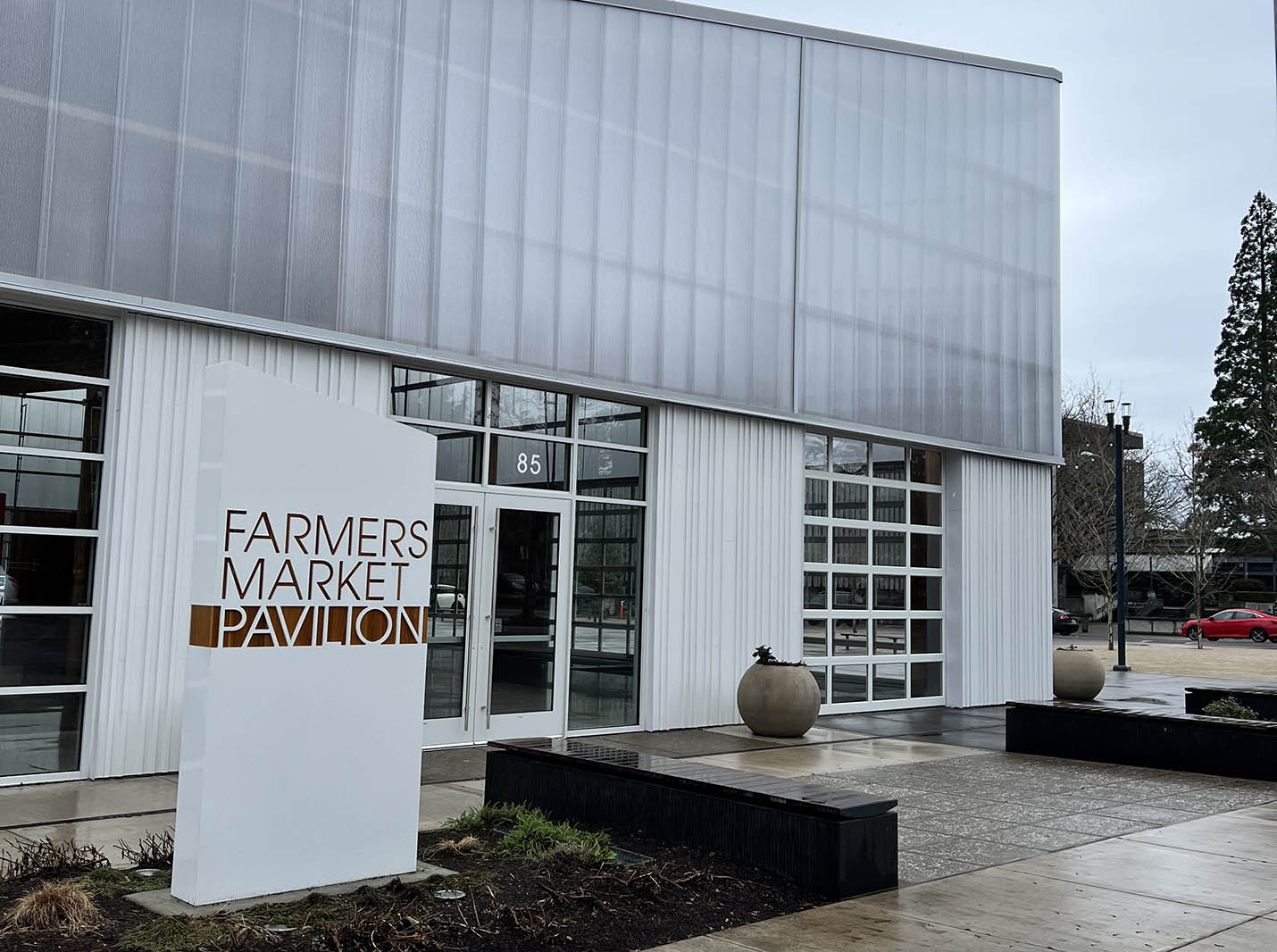Eugene’s year-round weekend market gets a cozy design boost
PAE performed energy modeling, designed the mechanical, electrical, and plumbing systems, and created the technology, AV, and security features.
With the onset of windy winter weather and rain in the Pacific Northwest, many area farmer’s markets close down for the season, but Eugene’s runs all year. The Lane County Farmer’s Market is a long and treasured tradition in downtown Eugene. The new and improved pavilion that opened last June was designed with the vendors in mind while providing as much functional activity space as possible.
“In the past, the market didn’t have any kind of shelter to be protected,” says Robert Mills, PAE Project Manager. The new pavilion provides for much needed indoor space with large roll-up doors almost all the way around. Vendors at the large market take turns, week by week, being inside or outside, with a seamless environment for guests. “Anytime I can, I will cut through so I can walk the plaza and enjoy,” says Mills. “It often smells so good I can’t help but stop! There are kombucha trucks, pizza joints, and even seating from adjacent restaurants.”
The location was a bit notorious in the neighborhood for being a large surface parking lot that sat at an angle. Called the Butterfly Lot, it attracted business parking during the week. A series of Lane County citywide improvements has pushed the lot to become more of a plaza area, aiming to activate the neighborhood with improved roadways, pedestrian friendly walkways, and water features.
PAE designed the mechanical, electrical, and plumbing systems for the new pavilion, which was an untraditional space. PAE also contributed technology, audiovisual, and security design, along with energy modeling.
The pavilion is 100% Cross-Laminated Timber (CLT), including the structure walls and all the utility boxes, a notable move toward sustainability. The mechanical and electrical systems are hidden away inside the wooden structure, creating a clean and modern look.
Since it’s intended to fully open to the outside, it’s a semi-conditioned space with limited options for systems. “We did a good job of taking what we could do in terms of the space and client needs and being innovative with it,” says Mills. There was no option for solar panels, but to cut down on the energy load, the team designed a heating-only radiant floor system. More specifically, it’s only in the aisles where people will walk, so on a cold day, it’s heating a targeted area. That helps keep visitors warm while drastically cutting down on the energy load.
For flexibility in the space that may want to bring in heating towers and tables for events, the electrical design offers floor boxes across the entire indoor floor and outside. Each box can handle one to two heating towers, and the entire electrical system is large and robust to better accommodate the growing unique needs. Food truck plug-ins and plumbing options are plentiful inside and out, including the side of the pavilion that does not roll up. With so many options, it creates a space that is incredibly responsive to the needs of farmers, food trucks, and even city event planners. In fact, there are tai chi classes in the summer mornings.
On the technology and AV side, the team installed active listening systems and AV hookups for performances and presentations. These are embedded in the floor slab so anyone that is hard of hearing can still enjoy the events, too. What’s more, the city’s wi-fi network extends in and around the center to provide connectivity.
The overall result has been well-received in the community and has served to revitalize the area and bring in more people, more families, and more activity.
“When we visited, it happened to be typical winter weather. Even with a wet, rainy day the energy was amazing, everyone was enjoying themselves.”



